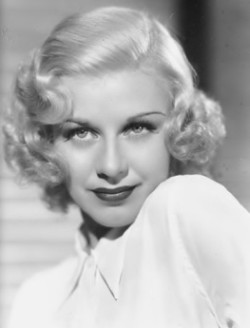 Ginger Rogers will forever be known as the dancing partner of Fred Astaire; they fit together. Together they made some of the greatest film musicals of all time. She could manage the steps, as well as both the sophisticated and common attitudes needed for the comedy and romance. Astaire danced with others who were technically better, but no one who was such a perfect partner. Apart from Astaire she strove to have a “serious” career (after a group of “let’s put on a Broadway show” films) that led to a string of turgid melodramas that she could never pull off—not that anyone could have made Kitty Foyle watchable. Her best “solo” works were comedies.
Ginger Rogers will forever be known as the dancing partner of Fred Astaire; they fit together. Together they made some of the greatest film musicals of all time. She could manage the steps, as well as both the sophisticated and common attitudes needed for the comedy and romance. Astaire danced with others who were technically better, but no one who was such a perfect partner. Apart from Astaire she strove to have a “serious” career (after a group of “let’s put on a Broadway show” films) that led to a string of turgid melodramas that she could never pull off—not that anyone could have made Kitty Foyle watchable. Her best “solo” works were comedies.
An honorable mention goes to the anthology film, Tales of Manhattan (1942) simply for the large number of golden age stars in it.
#8 – The Major and the Minor (1942) — 31-year-old Rogers pretends to be a child to get a half price train ticket and ends up with Ray Milland at a military school. As this is a romantic comedy, they’d never make it today. [Also on the Ray Milland list]
#7 – Carefree (1938) — A lesser Astaire/Rogers film which is more of a screwball comedy than their typical musicals.
#6 – Star of Midnight (1935) — A ripoff of the Thin Man series; if I can’t get another real one, close is good enough. William Powell is a gentleman detective—this time a lawyer—and Rogers is the girl who wants to marry him.
#5 – Flying Down to Rio (1933) — The first pairing of Astaire and Rogers, though not as the leads. It was intended as a vehicle for breathtaking Mexican actress Dolores del Rio and she’s good, but the pair steal the film. Beyond the music, there’s the exquisite and totally unreal world. Brazil never looked like this but I wish it did. This is a pre-code film; jokes about rounded heels (look it up) and what South American women have that’s better below the equator would have been censored a few years later. Likewise the transparent tops of the female wing-walkers. [Also on the Fred Astaire list]
#4 – Swing Time (1936) – The 6th Astaire/Rogers film, it has some of the best dance numbers, but with a weaker script than their earlier films. The humor fails and the world is not as magical, none of which matters when Astaire sings “The Way You Look Tonight.” [Also on the Fred Astaire list]
#3 – Shall We Dance (1937) – Another Astaire/Rogers, with another assist from the always good Edward Everett Horton and Eric Blore. I find this to be the funniest Astaire film with Astaire playing a jazz dancer who has made it in ballet so must put on a persona of an arrogant Russian. The songs are solid, with “They Can’t Take That Away from Me” the standout. [Also on the Fred Astaire list]
#2 – The Gay Divorcee (1934) – The 2nd Astaire/Rogers film, and the first with them as leads, this one has Rogers attempting to get a divorce from her absent husband and mistaking Astaire as the gigolo she planned to use for cause. Horton and Blore appear again. [Also on the Fred Astaire list]
#1 – Top Hat (1935) – The 4th Astaire/Rogers picture and they’d perfected the routine. The jokes are solid and the fantasy world of shining marble is wondrous and where I want to live (much less depression era audiences). And of course the dance numbers are fantastic. Rogers falls for a very forward Astaire until she incorrectly deduces that he’s the husband of her good friend. Horton, Blore, and Helen Broderick add to the comedy. [Also on the Fred Astaire list]
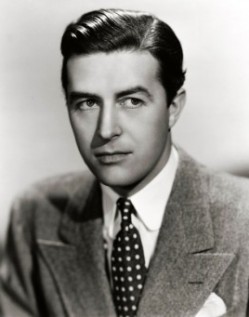 Handsome and debonair, Milland’s early career was mainly in romantic comedies and light action films. His big break came with The Jungle Princess (1936), which made Dorothy Lamour a star as The Sarong Girl. His reputation changed with The Lost Weekend (1945) which won multiple Oscars, but is hard to view as anything other than suffering-porn now—it lacks a plot and an ending. It was no doubt important for people who never realized that alcoholism was bad. But this did alert Hollywood to his skill as a serious actor.
Handsome and debonair, Milland’s early career was mainly in romantic comedies and light action films. His big break came with The Jungle Princess (1936), which made Dorothy Lamour a star as The Sarong Girl. His reputation changed with The Lost Weekend (1945) which won multiple Oscars, but is hard to view as anything other than suffering-porn now—it lacks a plot and an ending. It was no doubt important for people who never realized that alcoholism was bad. But this did alert Hollywood to his skill as a serious actor.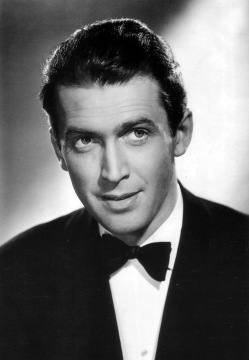 Stewart had a more varied career than most actors and far more than most leading men of the golden age. He not only was in, but was known for, comedies, dramas, melodramas, family films, romances, thrillers, and Westerns. Early in his career, he was in a string of sentimental Frank Capra movies, with It’s A Wonderful Life being the most famous. I’m not a fan of these as they tend to go over the top with shmaltz, letting both real human interaction and humor die for the sake of sentimentality. The worst offender is You Can’t Take It with You, a wonderful play that is gutted by Capra. Luckily, Stewart had other moments, with strong turns in comedies before becoming one of Hitchcock’s two favorites (
Stewart had a more varied career than most actors and far more than most leading men of the golden age. He not only was in, but was known for, comedies, dramas, melodramas, family films, romances, thrillers, and Westerns. Early in his career, he was in a string of sentimental Frank Capra movies, with It’s A Wonderful Life being the most famous. I’m not a fan of these as they tend to go over the top with shmaltz, letting both real human interaction and humor die for the sake of sentimentality. The worst offender is You Can’t Take It with You, a wonderful play that is gutted by Capra. Luckily, Stewart had other moments, with strong turns in comedies before becoming one of Hitchcock’s two favorites ( Some lists are hard. Some are easy. And some are pretty much repeats. This one is a
Some lists are hard. Some are easy. And some are pretty much repeats. This one is a 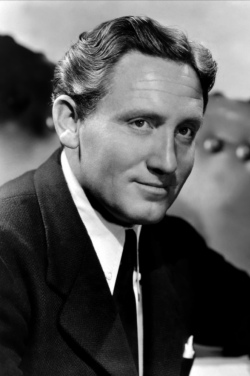 With his no-nonsense, man’s man persona and natural style, Spencer Tracy was successful in both dramas and comedies. Although he was an alcoholic, he was known for his professionalism. It was with that understanding of addiction that he helped a broken Montgomery Clift give his great performance in Judgment at Nuremberg.
With his no-nonsense, man’s man persona and natural style, Spencer Tracy was successful in both dramas and comedies. Although he was an alcoholic, he was known for his professionalism. It was with that understanding of addiction that he helped a broken Montgomery Clift give his great performance in Judgment at Nuremberg.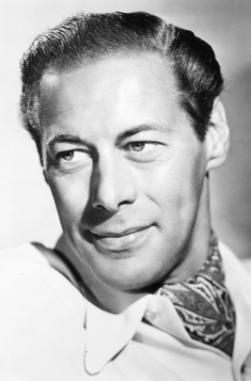 I think of Rex Harrison as one of the great actors, yet “great” is not a word I use with his most famous films. Doctor Dolittle, Anna and the King of Siam, The Agony and the Ecstasy, The Yellow Rolls-Royce, and Cleopatra are all fine, watchable flicks, but no masterpieces, and I normally don’t even call them good without some kind of qualification. (My Fair Lady is a level up, but I still qualify any compliments I give it.)
I think of Rex Harrison as one of the great actors, yet “great” is not a word I use with his most famous films. Doctor Dolittle, Anna and the King of Siam, The Agony and the Ecstasy, The Yellow Rolls-Royce, and Cleopatra are all fine, watchable flicks, but no masterpieces, and I normally don’t even call them good without some kind of qualification. (My Fair Lady is a level up, but I still qualify any compliments I give it.) Edward G. Robinson was one of the kings of early gangster cinema (along with Jimmy Cagney, George Raft, and their second banana, Humphrey Bogart).Things changed in a decade, with old-style crime movies fading, replaced by war movies and
Edward G. Robinson was one of the kings of early gangster cinema (along with Jimmy Cagney, George Raft, and their second banana, Humphrey Bogart).Things changed in a decade, with old-style crime movies fading, replaced by war movies and 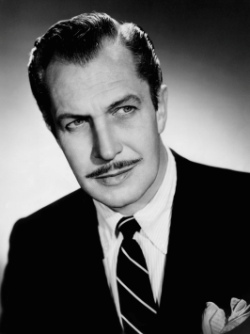 The 4th of the Big Three horror icons (of sound films), like Karloff before him, Vincent Price had a liquid-jeweled voice and range. Price’s early work was more often in
The 4th of the Big Three horror icons (of sound films), like Karloff before him, Vincent Price had a liquid-jeweled voice and range. Price’s early work was more often in 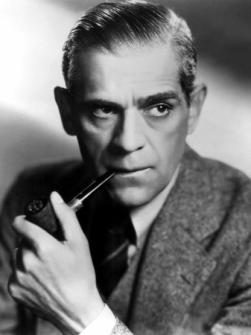 The second of the Big Three horror icons (
The second of the Big Three horror icons (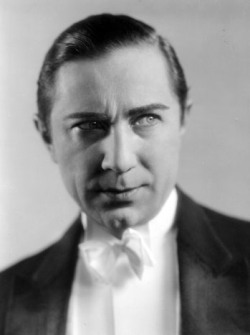 Lugosi had a presence, a charisma, that shaped scenes and entire films. Was he a good actor? It’s hard to say. He wasn’t really given a chance. With his thick accent and less-than-perfect English, his roles were going to be limited. Add in the tendency to pigeonhole horror actors and his own poor choices, and he ended up with a troubled career. But he had a few moments, and those have made him an icon.
Lugosi had a presence, a charisma, that shaped scenes and entire films. Was he a good actor? It’s hard to say. He wasn’t really given a chance. With his thick accent and less-than-perfect English, his roles were going to be limited. Add in the tendency to pigeonhole horror actors and his own poor choices, and he ended up with a troubled career. But he had a few moments, and those have made him an icon. When I was a child in the ‘60s, Stanwyck was known primarily as a television Western star. But time is not kind to TV shows in general and particularly not to Westerns, so that work is fading from cultural memory, which is for the best in this case as she should be remembered first as a film actress.
When I was a child in the ‘60s, Stanwyck was known primarily as a television Western star. But time is not kind to TV shows in general and particularly not to Westerns, so that work is fading from cultural memory, which is for the best in this case as she should be remembered first as a film actress.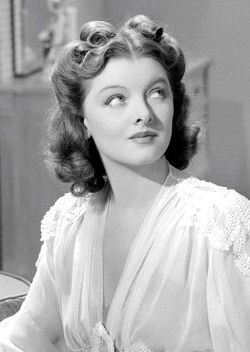 If I’m doing a list for William Powell, then I should do one for Loy, and even more so as this is an easy list to make—it has a great deal of overlap with my
If I’m doing a list for William Powell, then I should do one for Loy, and even more so as this is an easy list to make—it has a great deal of overlap with my